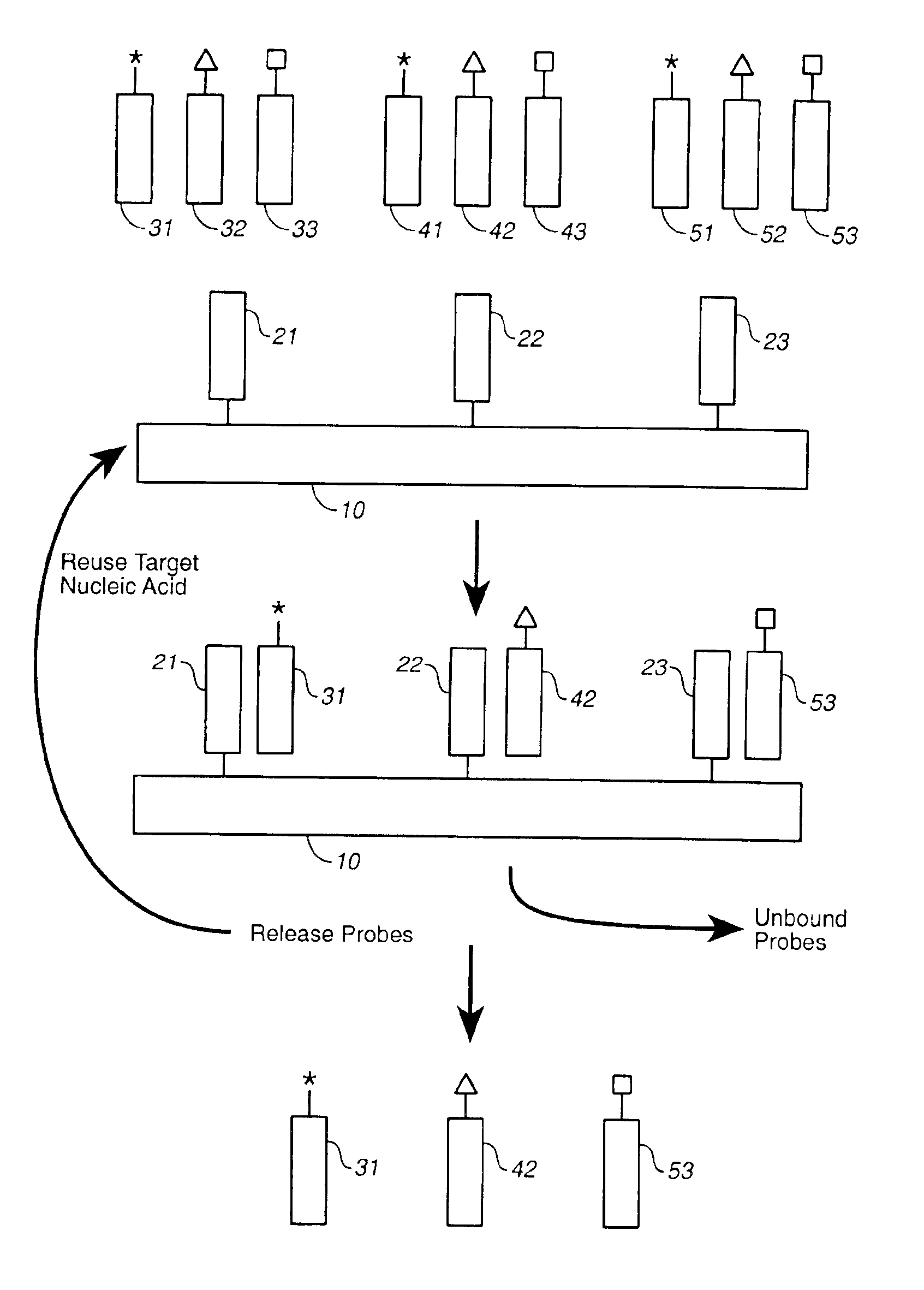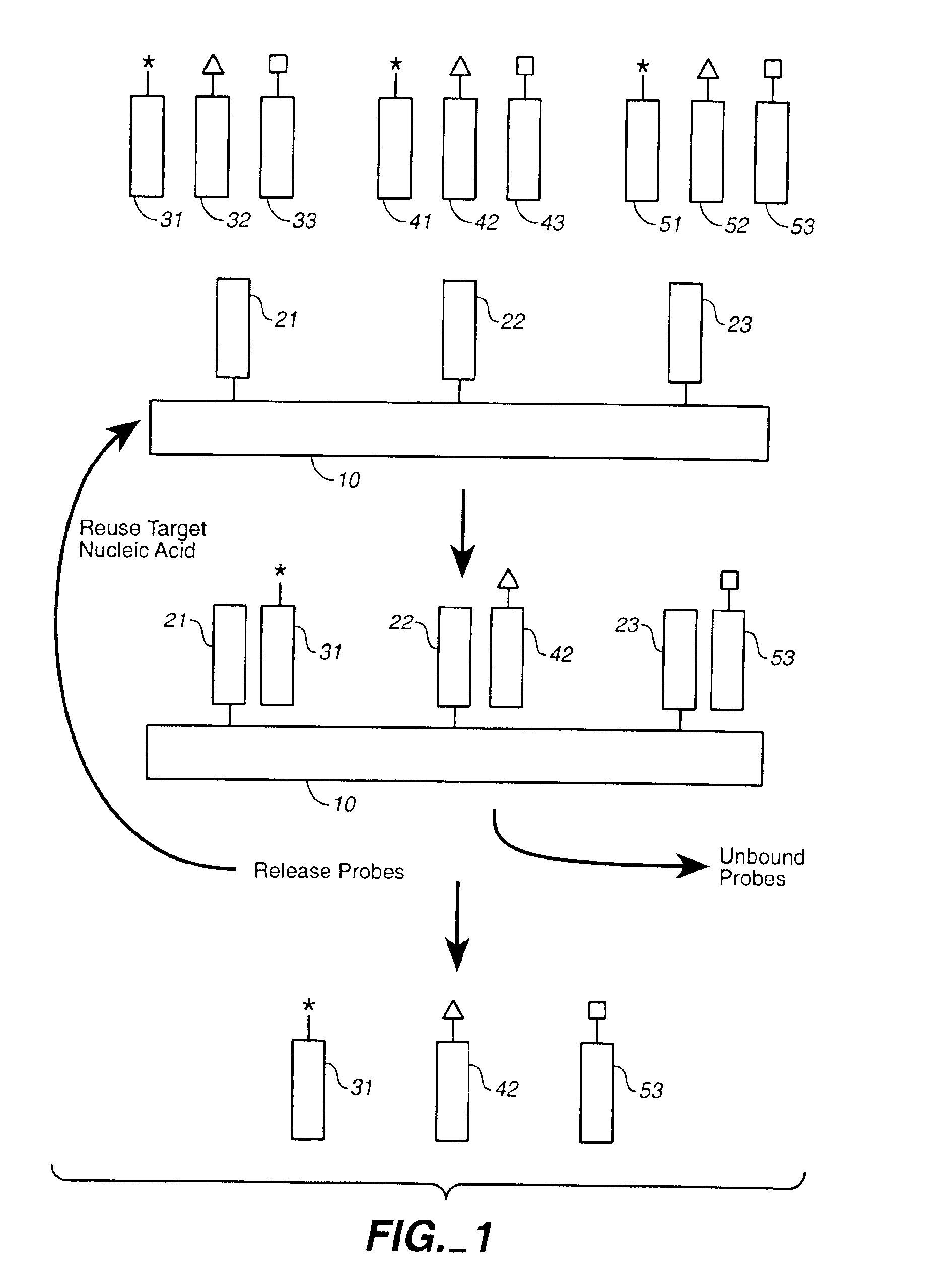Compositions and methods for repetitive use of genomic DNA
a technology of genomic dna and composition methods, applied in the field of detection or genotyping, can solve the problems of difficult use, difficulty in obtaining significant data in large-scale genotyping or snp identification studies, and difficulty in specificity,
- Summary
- Abstract
- Description
- Claims
- Application Information
AI Technical Summary
Problems solved by technology
Method used
Image
Examples
example 1
Solid Phase Genomic DNA is Reusable
[0214]Protocol: Begin with 1 ug gDNA on 50 ug of beads. (Homozygous 1958 and 2180).[0215]1. Hybridize OLA oligos for locus 1958. Ligate. Elute products with NaOH. Amplify by PCR.[0216]2. Hybridize OLA oligos for locus 2180. Ligate. Elute products with NaOH. Amplify by PCR.[0217]3. Repeat steps 1 and 2 through 6 cycles.
Analyze by agarose gel electrophoresis. See FIG. 5.
[0218]Conclusion: Genomic DNA immobilized on a solid phase is reusable at least six times. Ligase allele selectivity is quite good.
example 2
Genomic DNA on Magnetic Particles is Reusable in the Oligonucleotide Ligation Assay
[0219]Protocol: To beaded DNA-hybridize 48 SNP oligos, wash, ligate, elute, PCR amplify.
[0220]Store overnight. Mix controls. Hybridize 48 SNP oligos, wash, ligate, elute, PCR amplify.
[0221]Analyze by agarose gel electrophoresis. See FIGS. 6A and B.
PUM
| Property | Measurement | Unit |
|---|---|---|
| Tm | aaaaa | aaaaa |
| temperature | aaaaa | aaaaa |
| Tm | aaaaa | aaaaa |
Abstract
Description
Claims
Application Information
 Login to View More
Login to View More - R&D
- Intellectual Property
- Life Sciences
- Materials
- Tech Scout
- Unparalleled Data Quality
- Higher Quality Content
- 60% Fewer Hallucinations
Browse by: Latest US Patents, China's latest patents, Technical Efficacy Thesaurus, Application Domain, Technology Topic, Popular Technical Reports.
© 2025 PatSnap. All rights reserved.Legal|Privacy policy|Modern Slavery Act Transparency Statement|Sitemap|About US| Contact US: help@patsnap.com



